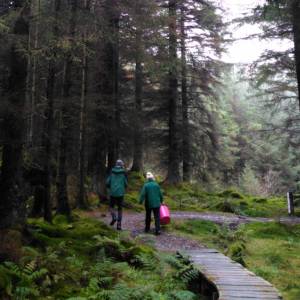Solitary swimming
Solitary wild water swimming is a different experience to being part of a group. I started off by myself, as did many during covid, and found it was less of a lonely experience than I had envisaged. Indeed, the intense cold of the water seemed to replace the insidious cold of isolation with something more positive. So, I have continued.
There are of course pluses and minuses to social or solitary activities.
The first major thing about solitary swimming is that your health, well being and life are entirely your own responsibility. In a group there is always someone to look out for you and vica versa, but by yourself it is your judgement, your action that dictates the event. Some of those I know are vociferous in condemning solitary swimming as both foolhardy, selfish and asking for trouble.
However, for me it enables the approach to be very much more thought through than if I was relying on others. In many ways it is like going for a walk in the African Bush. Knowing that there are wild animals in close proximity that could kill you and working out the best ways of moving through the habitat so as not to get eaten gives an edge and a vitality to living that is never matched with walks through the English countryside. Similarly, knowing that the cold and drowning can take your life makes every moment of being alive precious, with depth and clarity.
Laying ground rules – I have a simple one – never to go out of my depth. This means I swim along the lake shore rather than out even a little way and put up with the bruised knees and feet.
Knowing the water – where are the deep bits, is there a river current, is the bottom likely to be clear of glass, tins, fishing tackle and underwater snags and branches?
I prefer to wear a swimsuit (with a woolly hat, boots and neoprene gloves) rather than a wet-suit. You can’t stay in for so long but there is no false sense of security that the suit will save you if you overstay. Also, getting out of a wet-suit with numb hands may not be possible. Getting dry is the first requirement to getting warm so stripping off the swimmers entirely and using the towel as vigorously as possible all over.is the top priority. Getting into layers of woollens and a windproof quickly beats huddling up in wet things inside a dry-robe, in my opinion.
Timing decreases as cold increases. Knowing your body’s reaction to cold and the changes to the feeling of your skin is a vital part. After the initial shudder of immersion there is a period (always shorter than you would like) where heat floods in just under the skin surface. You feel so alive and a part of the element that you could stay in forever. But then tiny shooting stabs of electrical impulse start off in hands and legs, twitching involuntary nerves. Time to head for land. You should be a bright lobster red when you emerge! Staying in longer and the twitches become overlaid by a sluggishness, the world becomes more remote and very very soon after this arms and legs stop working. No amount of will-power can get them to function. Happily, I only edged onto that territory once, but have watched Titanic.
Making sure there is a sheltered warm up spot – car, club house, other habitation. Plenty of warm clothes.
Preparing a hot drink and biscuit – in cold weather, a cool bag holding a triple wrapped hot water bottle.
Do I tell others when and where I’m going? – only sometimes. I think that by the time they realised I wasn’t back it would be too late. Anyway, in the larger Lakes very often there are other people around and you would hope that shared humanity might inspire them to call for help.
Which brings me round to going for a swim today. The picture is of my favourite Crummock water in between torrential showers.- which made it a stunningly beautiful and certainly very solitary swim.
- 1
- 0
- Samsung SM-A105FN
- 1/909
- f/1.9
- 4mm
- 40

Comments
Sign in or get an account to comment.


